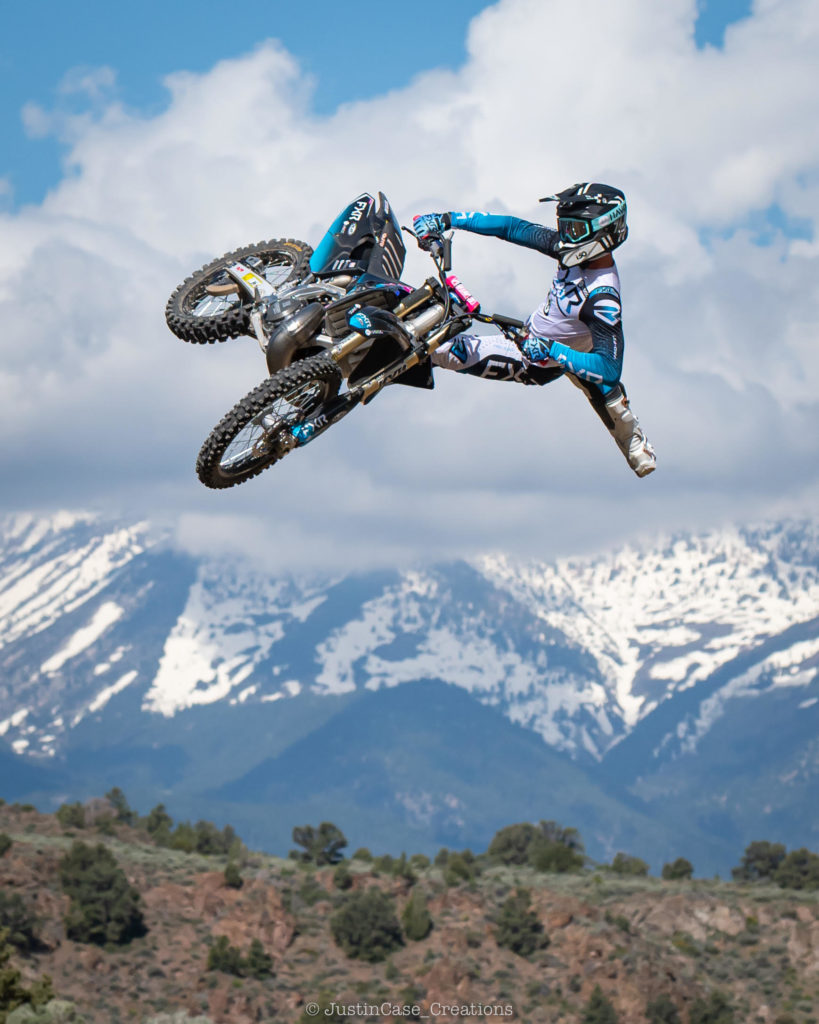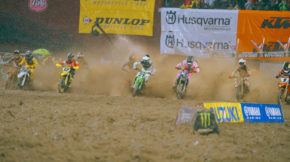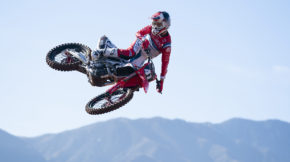Ramps: FMX Hero or Villain?
Share

The Adam Jones FMX Blog
I’m not sure who else has seen the old video of Travis Pastrana going around from a late 90s Gravity Games win, but my goodness….if you haven’t seen it go find it! I watched this video and was so inspired, it made me think so much about where FMX is now, where it has been, and where it came from. I thought about my time in the sport and the things we have done in the sport, and what might have been good, and what might have been bad. Honestly, I haven’t been able to get it off my mind lately, thinking that maybe a change of direction in the early 2000s when the next generation got in, or a change of mindset somewhere along the way could have kept FMX a thriving sport like skate, instead of it ending up more like rollerblading.
When I look back on FMX and wonder what was good and what was bad, I think about the invention of metal ramps. Metal ramps gave us consistency with our biggest tricks, they allowed us to easily backflip, and then easily do backflip combos, until we ran out of right-side-up tricks to put into a backflip. At the time it seemed like the right way to do things. I mean FMX had maybe an 8-year span of insane progression where everyone loved it, it was prime time TV coverage at the X Games, grandma watched it and loved it, and it was as mainstream as it gets! People were excited to see our biggest, baddest, tricks, fully extended every time.So what happened? Surely these ramps that saved the day and helped us with unimaginable progression in a short amount of time can’t be the bad guys, can they?
Well, before I say any more let me clarify that I guess you could say I’m a ramp kid. I mean I grew up racing, and although I’m not going to qualify for any pro races, I’ve got enough skills on a bike to pay the bills. But I would say I’m a ramp kid because I’ve made my living on ramps. Paychecks were always earned for me at events with ramps, and I rarely took the extra time to go off freeriding. I practiced my extension at the practice ramp spot, went to the ramp contest, and then came home to my family…that was life for me. So yeah, ramp kid….but not like, “I can’t ride a bike” type of ramp kid haha! Anyway, I had to clarify that because I didn’t want it to seem like I’m getting all high and mighty on my ivory tower about ramps right now when I have clearly used them to the fullest benefit my whole career. So although I’ve paid the bills on ramps, I can see now the damage ramps have done, and I don’t think I saw it before this video of Travis at Gravity Games.
To be honest, ramps just made it too damn easy! You could always do your hardest trick at any given time on any ramp, the only difficult part was linking everything together into a run with no mistakes. The fact that you could always do your hardest trick on any given jump meant that you always did. There were never any 35’ hips that you had to do a nac nac on or any flat-lipped 70’ jumps that you could only do a lazy boy on. what that means is we lost a bit of everyone’s style when everyone could just do whatever the biggest “it” tricks were on every jump. You see, everyone in FMX is a specialist in a certain style of trick, and the tricks they are a specialist in come easy to them. So on those difficult jumps that’s where their style shined through. For instance, I’d McMetz any one of those tiny, flat-lipped, hipped, shit box jumps when no one else in the world would. Mike Mason would have done a huge switchblade on a 30’ hip that no one could have matched. Matt Buyten would have done the biggest stripper ever on it….and he might have also ridden the contest too (lol)! But without those silly jumps on the course and only a plethora of 75’ ramps, we never had to dig past the top shelf of our tricks to make a run, and to be honest that was probably the worst thing for our sport!
I wonder now looking back how things would be if judges wouldn’t have only rewarded the biggest, baddest, newest…and instead rewarded creativity, individual style, and just doing something different than everyone else. I mean we can all do the same shit anyways, so why didn’t we judge it like that? Most guys shelved their unique, individual tricks for that KOD flip, or cliffhanger flip, or Double Nac that the judges said we needed. Then slowly but surely individualism and creativity crept out of freestyle motocross. Now what we are left with is five- or six-trick runs, that all have at least two of the same tricks, and courses that consist of only 75’ ramps. How could we be so crazy to think that is sustainable? Seeing Travis’ video made me realize how fun it is to watch something different that has energy. It made me realize that it isn’t the trick that matters, it’s just how it makes you or the audience feel while watching. what I mean is tricks that aren’t the “IT” trick can be way more fun to watch when the course is appropriate for it and the guy is out there flowing and feeling it. maybe we didn’t need to keep going bigger and bigger and bigger. And maybe we didn’t need to have the most consistent ramps in the world where we could do anything at any time, and lastly…maybe we should have told the judges to piss off and just did it how we wanted to do it? I am positive that’s how Deegan did it, and would have continued to do it, so I guess in our inexperience and desire to make it, it was us who stuck the fork in FMX.

































